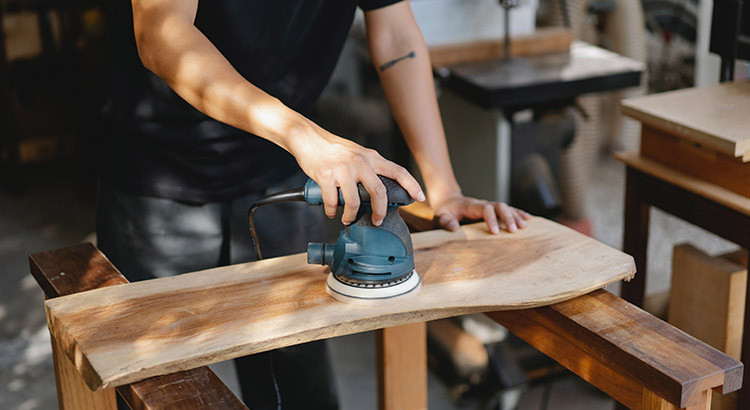As we all know, the application of coated abrasives in modern industry is very common. At present, coated products are mostly concentrated in the woodworking market, metal grinding and surface treatment market, and the automotive industry. For the traditional woodworking market, the manufacturing problems of today’s abrasive tool manufacturers have been basically solved, the characteristics of their products are gradually the same, and the quality difference and top brands are gradually narrowed. Sandpaper for wood include dry sanding, wet sanding and mechanical sanding.
Dry sanding: Use sandpaper or sanding disc for grinding. It is suitable for grinding hard and brittle paints. The disadvantage is that a lot of dust will be generated during the operation, which will affect the environmental sanitation. Wet sanding: sand with sandpaper dipped in water or soapy water. Water grinding can reduce wear marks, improve the smoothness of the coating, and save sandpaper and labor. However, when spraying the lower layer of paint after water grinding, first, the lower layer of paint must be applied after the water-grinding layer is completely dry, otherwise the paint layer will easily whiten. Another highly absorbent substrate should not be water milled. Mechanical grinding: During large-scale construction, in order to improve work efficiency, mechanical grinding methods can be used, such as electric grinding machines (disc type, vibration type).
When we get a piece of white blank, we first rough sand it to remove the small edges, corners, burrs and other traces left on the furniture during processing. It’s important for wood industry to select what grit sandpaper for cabinets. The dust from sanding is easy to embed in the temples, so it is necessary to brush the dust while sanding until the surface is flat and smooth. After blowing and wiping, use different types of sandpaper to polish it separately. After many times of polishing, the furniture seems to be very smooth in every part.
One of the rules of furniture sanding is to use a sanding sponge block (sponge sand or wood block), because furniture sanding without a sanding block cannot guarantee uniform sanding strength. For flat surfaces, the sanding block should be cushioned; a sanding block without a cushion is inflexible, so the grit from the sanding block can scratch the wood surface during sanding. For curved surfaces, your best bet is a thick foam pad or sponge covered with sandpaper. These fillers change their shape according to the curvature of the wood, resulting in a consistent and even sanding force.Then perform fine grinding. The purpose of this level of grinding is to eliminate the sand marks left in the rough grinding process, and the purpose is to keep improving. At this stage, when grinding the corners and edges of the object, the force should be appropriate, the action should be light, and the original round or square outline must be maintained. As the last water-grinding process, so that the furniture produced is closer to the tradition.

